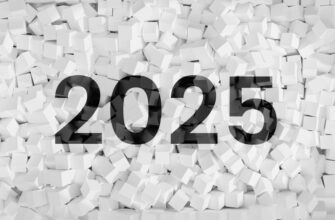Understanding USD IDR Exchange Rates
The USD to IDR exchange rate represents how many Indonesian Rupiah (IDR) one US Dollar (USD) can buy. This critical financial metric impacts everything from international trade to personal remittances. For travelers, investors, or businesses operating between the US and Indonesia, tracking USD IDR rates is essential for cost planning and financial decision-making. Fluctuations in these rates can significantly affect purchasing power, investment returns, and economic stability.
Key Factors Influencing USD IDR Rates
Multiple economic and geopolitical elements drive changes in USD IDR rates:
- Interest Rates: Higher US Federal Reserve rates often strengthen the USD, increasing the USD/IDR rate.
- Inflation Differentials: If Indonesia’s inflation outpaces the US, the IDR typically weakens against the USD.
- Political Stability: Elections or policy shifts in either country can trigger volatility.
- Commodity Prices: As a resource-rich nation, Indonesia’s IDR often correlates with prices of coal, palm oil, and nickel.
- Global Risk Sentiment: During economic uncertainty, investors flock to the USD as a “safe-haven” currency, pushing USD/IDR higher.
Historical Trends in USD IDR Exchange Rates
Over the past decade, USD/IDR has experienced notable shifts. In the early 2010s, rates hovered around 9,000 IDR per USD. By 2015, volatility surged due to falling commodity prices and US rate hikes, pushing the pair near 14,000 IDR. The COVID-19 pandemic saw another spike as investors sought USD liquidity, with rates briefly exceeding 16,000 IDR in 2020. While stabilization occurred post-pandemic, structural factors like trade balances and monetary policies continue driving long-term trends. Analyzing these patterns helps forecast potential future movements.
How to Secure the Best USD to IDR Rates
Follow these strategies to maximize value when converting currencies:
- Compare Providers: Banks, money changers, and online platforms (like Wise or Revolut) offer varying rates—always check fees.
- Time Your Transfers: Use rate alerts to exchange when USD weakens against IDR.
- Leverage Limit Orders: Set target rates with brokerages to automate conversions at favorable levels.
- Avoid Airports/Hotels: These locations typically offer poor rates; use local banks or authorized exchangers instead.
- Consider Hedging: Businesses can use forward contracts to lock in rates for future transactions.
Why Monitoring USD IDR Rates Matters
Regularly tracking USD IDR rates isn’t just for forex traders. Importers face higher costs when IDR weakens, while exporters benefit. For families receiving remittances, a 10% rate shift can mean significant income differences. Investors in Indonesian assets also monitor currency risks—a falling IDR can erode returns. Real-time tools like XE.com, Bloomberg, or central bank resources provide updates to inform timely decisions.
USD IDR Rates: Frequently Asked Questions
Q: What is the current USD to IDR rate?
A: Rates fluctuate constantly. Check live financial platforms like Google Finance or Reuters for real-time data. As of 2023, averages ranged between 15,000–16,000 IDR per USD.
Q: Why does the USD/IDR rate change daily?
A: Supply/demand dynamics, economic data releases (e.g., GDP, employment), and geopolitical events cause minute-by-minute adjustments in global forex markets.
Q: Where can I get the best USD/IDR exchange rates?
A: Online transfer services typically offer better rates than banks. Compare tools like Wise, OFX, or local Indonesian exchangers for low fees and mid-market rates.
Q: How often do USD/IDR rates update?
A: Forex markets operate 24/5, so rates change continuously. Major shifts often follow US or Indonesian economic announcements.
Q: What was the highest USD/IDR rate in history?
A: The pair peaked above 16,000 IDR per USD during the 2020 market crash. Historical highs reflect crises, like the 1998 Asian Financial Crisis when rates soared past 10,000 IDR.








